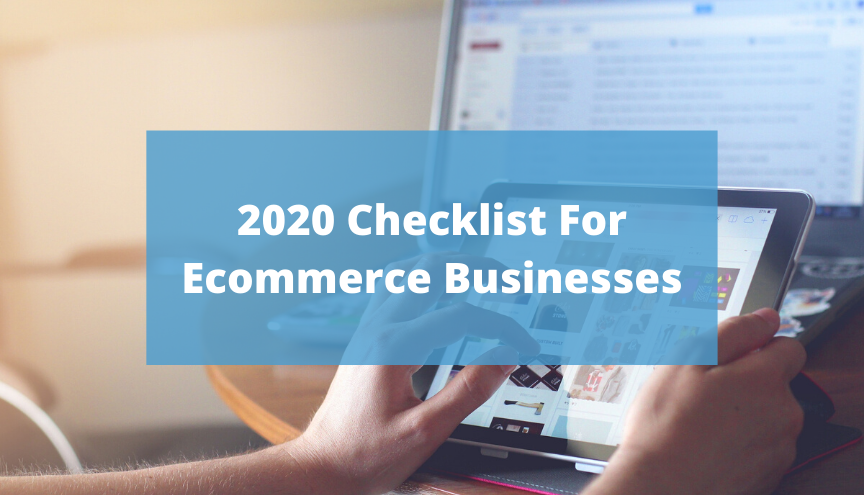2020 Checklist For Ecommerce Businesses
Whether you’re a veteran online seller or just getting started, the rules are the same. As 2019 has finished, you want to make sure you start 2020 off with a bang.
At Kyozou, we’ve been fortunate enough to work with thousands of online sellers since we opened up for business in 2003. Working with sellers across all niches and helping pioneer the online multi-channel ecommerce industry over 16 years, it’s an understatement to say that we only have a slightly good idea of what it takes for sellers to success online.
There’s multiple key concepts that factor into every seller who has a successful year. Don’t just think they blindly went into a new year without much thought. The successful online sellers start a checklist ahead of time, every single year, to make sure they’re prepared and ready to crush their online sales better than the previous year. To help get you started, we’ve compiled this simple checklist for ecommerce business to help you start the new decade off right.
Reorganize Your Inventory & Warehouse
If you took advantage of Black Friday and Cyber Monday (both basically last an entire month now!) your physical storefront (if you have one) may have gotten quite disorganized. You may have even found out the hard way that perhaps it’s not setup optimally for fast shipping.
We have a great article on rethinking your warehouse inventory management setup here. The gist of it falls down to ensuring that it’s setup to accommodate peaks in sales (i.e. BFCM), you’re efficiently utilizing barcode scanners to know what’s coming in and out of the warehouse, and you’re utilizing fail safe measures to ensure the correct products are being shipped out.
You also want to take a year end inventory count so you can make any corrections to your current records. If there are any significant differences, it’s probably a good idea to investigate further. You want to be sure that not only are you keeping accurate records, but that you’re not experiencing any internal loss. See maintaining fail safes here.
Rethink Your Sales Strategies
If you’ve only been selling on a single marketplace, now is the time to expand. More sellers than ever before are getting their products listed on multiple marketplaces.
More marketplaces = More eyes on your products and therefore sales, right? Well, in theory, yes. However, it must be done correctly. All too often large sellers try to list their products themselves on multiple markets, but often can’t keep up with updating the quantities across them. This leads to overselling and disgruntled customers. Nothing will turn a customer off from buying from you again than ordering something, paying, and then hearing the next day that the product is sold out.
Using a multi-channel listing software that automatically keeps your quantities in sync across all your marketplaces is what the top sellers are using. Plus, if you’re expanding to other markets for the first time, it makes doing so a breeze and no less work than listing to only one market.
Set Your Goals
If you’ve been reliably keeping track of your sales and profits throughout the year, you should have some good reports compiled by the end of 2019. Profit/Loss, Return on Ad Spend (ROAS), Return on Investment (ROI), Inventory Turnover, etc.
Keeping reports handy will also allow you to set and achieve good goals. If you know what your sales were like in Q1 2019, you should be ready to top them. Reporting will also allow you to accomodate for any troughs in sales throughout the year. It’s incredibly important for your sanity knowing you can look back at the prior years sales and see that maybe Q1 was slower for you every year rather than beating yourself up wondering why your sales are low now.
Having data available from prior years is incredibly important. If you’re not using a reporting management software now, it’s not too late. A software like Kyozou that can offer integrated reporting alongside your inventory and listing management can prove to pay dividends for your sales.
Verify Your Website is Working
This should have been doing before Black Friday/Cyber Monday, but if you haven’t already done so, take a walk through your website imagining your going through it through your customers eyes.
Do this on both mobile AND desktop. Even better, get a friend to do it as well.
Click every link and visit every web page.
The worst feeling is going through your website and noticing that your checkout process is bloated or there are code errors that have been the cause of your lower conversions. Even worse is realizing this three quarters of the way through the year, or after a major sale like BFCM.
Remove What Isn’t Working
Think back throughout the year on what caused you the most headaches but provided the least return. Stealing from Tim Ferriss, just eliminate it. The example he provided was cutting clients who caused the most headaches but provided you with the least amount of orders. The amount of stress this will remove, as well as help automate your sales and processes is not to be underestimated.
Scale What Is Working
If you’re running a general store and find that a particular product is giving you the majority of your sales, it might be time to either market this product more or break it out into its own separate focused store. Or perhaps a particular marketplace is giving you the majority of your sales. It’s always best to keep accurate reports so you can keep on top of these things to give yourself a competitive edge. You might find that a particular product only does well on a specific marketplaces and poorly on another. Keep this in mind.




